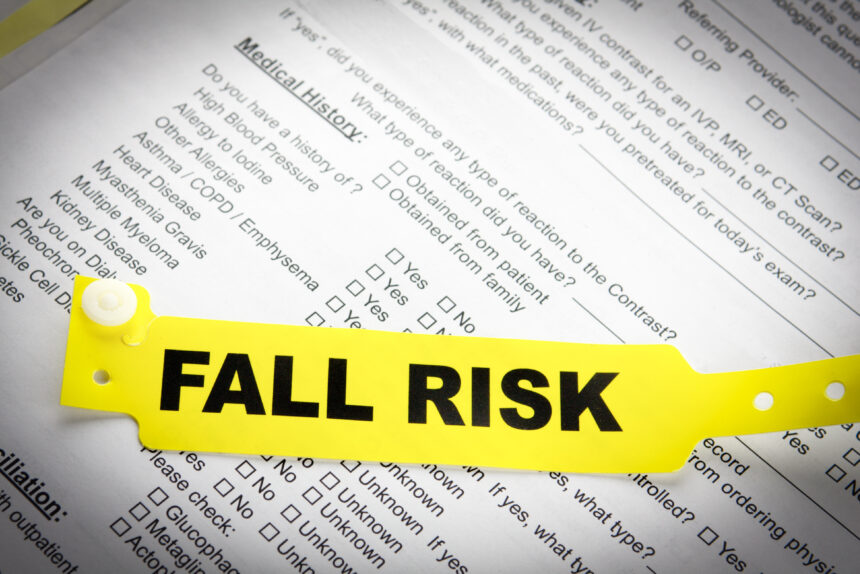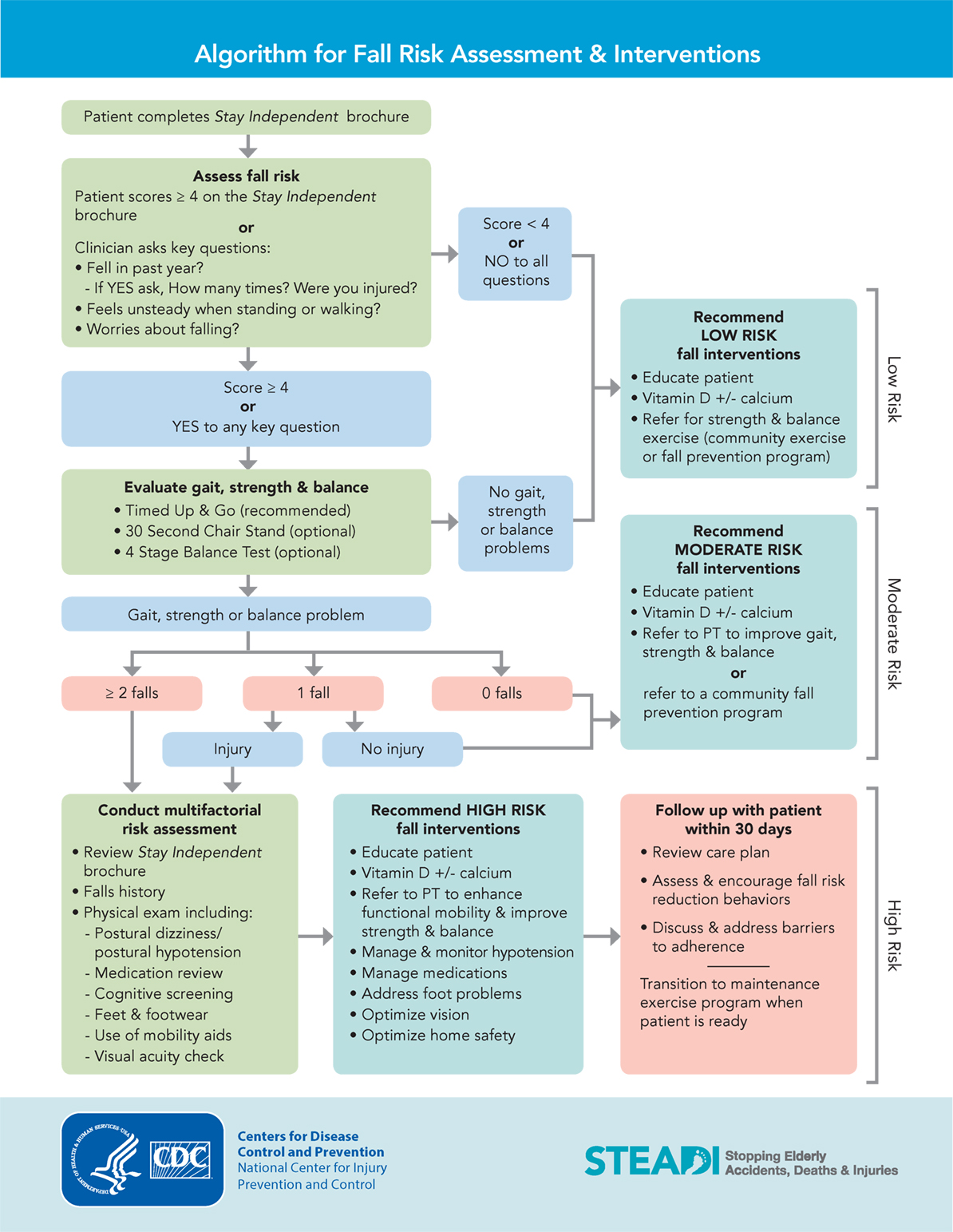Rumored Buzz on Dementia Fall Risk
An Unbiased View of Dementia Fall Risk
Table of ContentsThings about Dementia Fall Risk9 Simple Techniques For Dementia Fall RiskFascination About Dementia Fall RiskThe 10-Minute Rule for Dementia Fall Risk
A loss danger analysis checks to see exactly how likely it is that you will certainly fall. It is primarily done for older grownups. The evaluation typically consists of: This includes a series of questions about your general health and wellness and if you've had previous drops or problems with equilibrium, standing, and/or walking. These devices test your toughness, balance, and stride (the way you stroll).Interventions are recommendations that may decrease your danger of falling. STEADI includes three steps: you for your risk of falling for your risk elements that can be improved to try to avoid falls (for instance, equilibrium issues, impaired vision) to lower your danger of dropping by making use of efficient approaches (for instance, giving education and resources), you may be asked numerous concerns consisting of: Have you dropped in the past year? Are you worried concerning falling?
You'll sit down again. Your provider will check how much time it takes you to do this. If it takes you 12 seconds or even more, it might suggest you go to greater risk for a loss. This test checks stamina and equilibrium. You'll being in a chair with your arms crossed over your upper body.
The positions will get harder as you go. Stand with your feet side-by-side. Relocate one foot halfway ahead, so the instep is touching the big toe of your various other foot. Relocate one foot completely in front of the various other, so the toes are touching the heel of your various other foot.
Dementia Fall Risk for Dummies
Many falls occur as a result of numerous contributing variables; consequently, handling the threat of dropping begins with recognizing the variables that add to fall threat - Dementia Fall Risk. A few of one of the most relevant danger elements consist of: History of prior fallsChronic medical conditionsAcute illnessImpaired gait and balance, reduced extremity weaknessCognitive impairmentChanges in visionCertain risky medications and polypharmacyEnvironmental factors can additionally raise the threat for drops, including: Inadequate lightingUneven or damaged flooringWet or slippery floorsMissing or damaged hand rails and grab barsDamaged or poorly fitted equipment, such as beds, wheelchairs, or walkersImproper use assistive devicesInadequate supervision of individuals staying in the NF, consisting of those that exhibit hostile behaviorsA effective fall risk monitoring program calls for a thorough professional analysis, with input from all members of the interdisciplinary team

The treatment plan need to likewise consist of interventions that are system-based, such as those that promote a blog risk-free environment (appropriate illumination, handrails, grab bars, and so on). The effectiveness of the treatments need to be evaluated periodically, and the care strategy revised as essential to show adjustments in the autumn risk assessment. Applying a loss danger administration system utilizing evidence-based finest practice can minimize the occurrence of falls in the NF, while restricting the capacity for fall-related injuries.
An Unbiased View of Dementia Fall Risk
The AGS/BGS standard suggests screening all grownups aged 65 years and older for autumn threat each year. This screening includes asking individuals whether they have fallen 2 or more times in the previous year or sought medical interest for an autumn, or, if they have actually not fallen, whether they really feel unstable when strolling.
People that have fallen when without injury should have their balance and stride evaluated; those with gait or equilibrium abnormalities dig this must obtain additional assessment. A history of 1 autumn without injury and without stride or balance issues does not necessitate further evaluation past ongoing annual autumn threat testing. Dementia Fall Risk. A fall risk evaluation is needed as component of the Welcome to Medicare exam

The Best Strategy To Use For Dementia Fall Risk
Documenting a drops background is one of the quality indications for loss prevention and management. copyright medications in certain are independent forecasters of drops.
Postural hypotension can usually be eased by decreasing the dosage of blood pressurelowering medicines and/or stopping drugs that have orthostatic hypotension as a negative effects. Use of above-the-knee assistance hose pipe and resting with the head of the bed raised might also reduce postural reductions in blood stress. The advisable elements of a fall-focused physical exam are revealed in Box 1.

A Pull time higher than or equivalent to 12 secs recommends high loss threat. Being incapable to stand up from a chair of knee elevation without using one's arms indicates enhanced autumn danger.